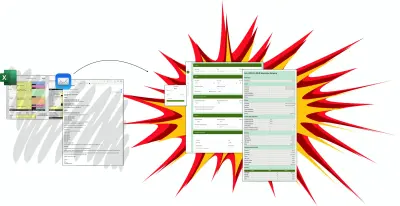Portals
Powerful web portals that connect you with customers, partners, and employees.
What makes our web portals special?
At Sevendays we develop powerful web portals that connect your organization with customers, partners and employees.
Our custom portals are designed to streamline your business processes, improve communication and make valuable data easily accessible.
Intuitive user experience
We create web portals that are easy to navigate, so users can quickly find what they need.
Our UX expertise ensures that every interaction is smooth and efficient.
Seamless integration
Whether you want to integrate existing systems or add new functionality, our portals are flexible and adapt effortlessly to your specific needs.
Secure and reliable
We build web portals with strong security protocols and robust infrastructure, so your data is always safe and accessible.
Our approach
Insight and Strategy
We start by understanding your business goals and the needs of your users.
Together, we define the most important functionalities and determine the strategy to make your portal a success.Design and Development
Our team designs a portal that is both functional and attractive, meeting the highest standards of usability and aesthetics.
Our developers then build the portal using the latest technologies.Testing and Improvement
We test the portal extensively to ensure that it meets all requirements and performs optimally.
Any improvements are implemented immediately.Implementation and Training
We help you with the implementation and provide training to ensure that your team can use the portal effectively.Maintenance and Support
Our work does not stop after the launch.
We remain available for support, updates and further optimization, so that your portal always remains up-to-date.
For who?
Our web portals are ideal for companies looking for an efficient way to manage internal processes, improve customer relationships or connect partners and suppliers.
Whether you are in healthcare, finance, retail or another sector, we have the expertise to develop a portal that meets your exact needs.
Key Use Cases
Employee intranet portals
Centralize access to internal resources, HR services, and collaboration tools.
Customer service portals
Give customers self-service tools like account management, live chat, and support.
E-commerce & B2B platforms
Centralize product browsing, shopping, and customer interaction.
Education portals
Provide access to online courses, virtual classrooms, and collaboration tools.
Healthcare portals
Empower patients to schedule appointments, view records, and use telehealth services.
Government portals
Provide citizens with seamless access to government services and information.
Start your project today
Are you ready to take your organization to the next level with a custom web portal?
Contact us for a free consultation and find out how we can help you.





